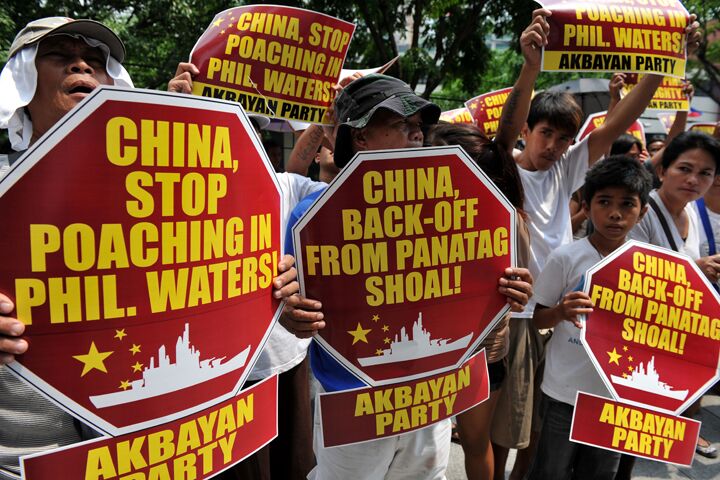
China-Philippines Standoff Intensifies
Beijing intensified a 10-day standoff between the Philippines and China on Friday by sending a third ship to a shoal in the South China Sea where both sides claim sovereignty.
The confrontation at the Scarborough Shoal began on April 10 when a Philippine warship accused eight Chinese fishermen of illegal entry and poaching in Philippine waters, and attempted to arrest them. Philippine officials said the vessels held endangered marine resources such as giant clams and live sharks, which it is illegal to catch. The Philippine officials attempted to arrest the fishermen, but were stopped by the arrival of two Chinese government vessels, which ordered the Philippine warship to leave Scarborough, saying it was Chinese territory. The Philippine ship refused to back down, saying that the territory lies well within Philippine waters. The UN Convention on the Law of the Sea designates a country’s exclusive economic zone as 230 miles from its coastline, and the shoal in question is only 140 miles from the Philippine coast. China’s closest territory to the shoal, Hainan province, is 542 miles away from the Scarborough Shoal.
On Tuesday, the Philippines asked China to bring the simmering dispute to a United Nations-linked international court. “[W]e fully intend to humbly invite our Chinese friends to join us in the International Tribunal on the Law of the Sea,” said Philippine Foreign Affairs Secretary Albert del Rosario. “The whole world knows that China has myriad more ships and aircraft than the Philippines. At day’s end, however, we hope to demonstrate that international law would be the great equalizer.”
But, in a move revealing how little regard China has for international law, Beijing ignored the proposal and reiterated its demand for the Philippines to withdraw its ships from the shoal in order to “restore peace and stability there.” Instead of taking the simmering dispute to court, China dispatched another patrol vessel to the shoal. Beijing said the third vessel was deployed because the Philippines had dishonored China’s jurisdiction.
The standoff is being closely monitored by regional players to see how far Beijing will go in its increasingly belligerent stance on territorial claims there. “We understand that the world is watching, and the issue at hand has a wider implication on how China is asserting its territorial claims, which have no basis in international law,” said Philippine Foreign Affairs spokesman Raul Hernandez.
China, the Philippines, Vietnam, Taiwan, Malaysia and Brunei all have competing claims in the South China Sea, with China claiming almost the entire sea. The area is disputed largely because it straddles some of the world’s busiest sea lanes, has rich fishing waters, and is believed to contain vast oil and natural gas reserves.
China has long said the disputes should be resolved bilaterally, but the Philippines and other nations have been quick to call upon the United States and international community for assistance. China has consistently expressed displeasure over external involvement, and over the waters of the South China Sea being a site for military drills for the U.S. and other powers. But last Monday, as the standoff between Chinese and Philippine vessels continued, thousands of U.S. and Philippine soldiers undertook joint military drills in those very waters. The military exercises, involving 4,500 U.S. troops and 2,300 Filipino soldiers, were planned before the standoff came to a head, though Manila called the display of U.S.-Philippine solidarity “timely,” in light of the conflict.
“Given the international situation we are in, I say that this exercise, in connection with all those that we have had in the past, is a timely and mutually beneficial event for us and our U.S. counterparts,” said Philippine Chief of Staff of the Armed Forces Jesse Dellosa.
However, the U.S. has said before that it may not always be willing to support its longtime ally the Philippines, and a time approaches when American backing will not be available for any of the nations China threatens. As China’s might continues to grow and American will fades, watch for Beijing’s belligerent behavior to simultaneously increase. The Philippines and other Asian nations will be compelled to abandon the sinking U.S. ship, and to set aside their intercontinental disputes. This shift will lead to the establishment of a colossal Asian power bloc and—ultimately—to the most hope-filled event in history! To understand more, read Russia and China in Prophecy.
